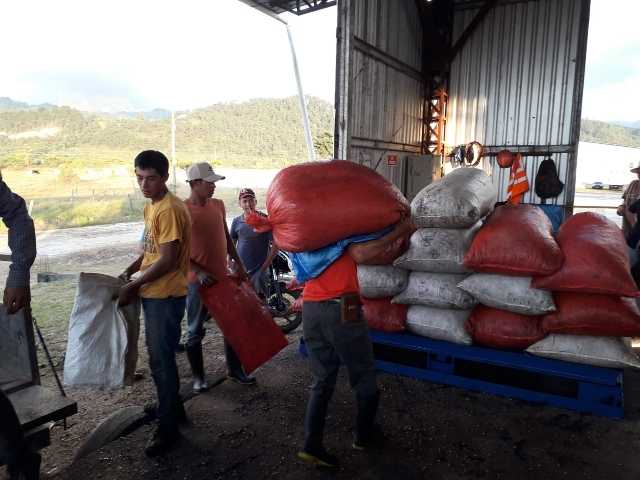MILAN, Italy – Agua Honduras is a project about the analysis of water in coffee processing productive units conducted by Accademia del Caffè Espresso, BWT water+more, Cafe de Honduras and IHCAFE. In particular, the following project was conducted thanks to Sergio Barbarisi, BWT water+more, Massimo Battaglia, Research Coffee Leader at Accademia del Caffè Espresso, Cristian Lizardo, Instituto hondureño del café (IHCAFE) – Integrated Pest Management Specialist coordinador investigacion CIC-CAB – La Fè, Allan Erazo, Instituto hondureño del café (IHCAFE) – Coordinator of the Department of Soils and Coffee Nutrition San Pedro Sula, Jorge Arturo Ruiz, Instituto hondureño del café (IHCAFE) – Jefe Centro Experimental en CIC-CAB and Carlos Lara, Instituto hondureño del café (IHCAFE) – Director Accademia del Caffè Centroamericana Corquin.
The Agua Honduras Project
Called even brasilian coffee preparation, cupping is an ancient method used to analyze the sensory profile and organoleptic qualities of coffee: to give to the product the correct destination of use and consumption. It is a simple method that is repeatable also at the origin of coffee : in improvised laboratories, or very close to the farms and process units. It is the fastest way to evaluate at the source, the work of the producer, in order to define its use and destination and especially to establish the price of the raw coffee.
Cupping is the best way to release all the nuances of flavor and aromas of the coffee. Producers, experts, import partners, roasters and baristas all use this procedure to analyze and evaluate new coffees.
With this method, the hidden flavors of the coffee bean cannot be manipulated or distorted, on the contrary of other coffee extraction methods such as espresso, moka or pour-over, that can all significantly vary the sensory profiles.
Even the minimum differences can be easily identified and the management of water for the extraction is obviously the most important element. It is therefore fundamental to not make mistakes regarding water: incorrect waters will give untruthful evaluations, sometimes with great surprises.
The true potential of the coffee can be understood only with quality water and a perfect extraction management.
Often in the areas of Honduras where coffee is produced, the main preoccupation in the preparation of cupping is the use of safe drinkable water, sanified, filtered, generally clear, odorless, colorless, harmless, with no pathogenic microorganisms or substances that can be harmful to man. In these rural areas often have availability of water that is contaminated and dangerous for human consumption.
For these reasons, in the evaluation sessions for buyers or for quality analysis (Cup of excellence or others), at the cupping moment, a purified and filtered commercial water is used, in plastic bins – 19 liter PVS Garrafones, substantially treated by osmosis and therefore without any dissolved solid content that certainly does not help the evaluation of the special characteristics of the coffee.
But if from a sanitary point of view these waters are drinkable and not dangerous …… from the evaluation point of view they extract only a part of the components of the coffee, creating in a certain way a false evaluation. Often once the buyer selects the preferred coffee, analyzing it once again in the country of consumption with a correct water, the result in the cup is completely different. Even the same producer, during the negotiation phase, cannot exploit at best the characteristics of the coffee in order to sell it at a higher price. Often we find a loss in value : coffee evaluated with an incorrect water can be sold at a lower price.
The Agua Honduras project was born from this need: to clarify the water quality of this large coffee producing country, with the objective of giving the best value to the product, and it combines the efforts of Accademia del Caffè Espresso, BWT Water+More and IHAFE (Instituto Hondurenho del cafè) as technical and scientific partners, united to support the producers during the negotiation phase.
The project analyzed 46 different waters, coming from processing units found in various areas of the country, in co-ops or productive structures, where water is normally used to transform washed coffee (method most used to process the cherries in Honduras), to prepare the coffee before the drying process, and very often for the cupping activities.
The regions involved were: Santa Barbara (8), Intibuca (2), La Paz (5), Comayagua(3), Francisco Morazan (2), Olancho (3), El Paraiso (4), Ocotepeque (5), Copan (5), Lempira (4), Yoro (3), Cortes (2) (see relative map).
The potential of these waters were monitored throughout the nation in order to value at best the coffee now that also Honduras has begun the road towards high quality coffee and the conquering of new markets, stepping away from the conventional product of the past.
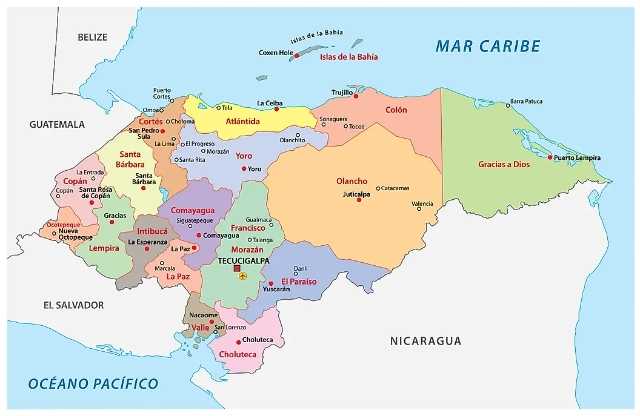
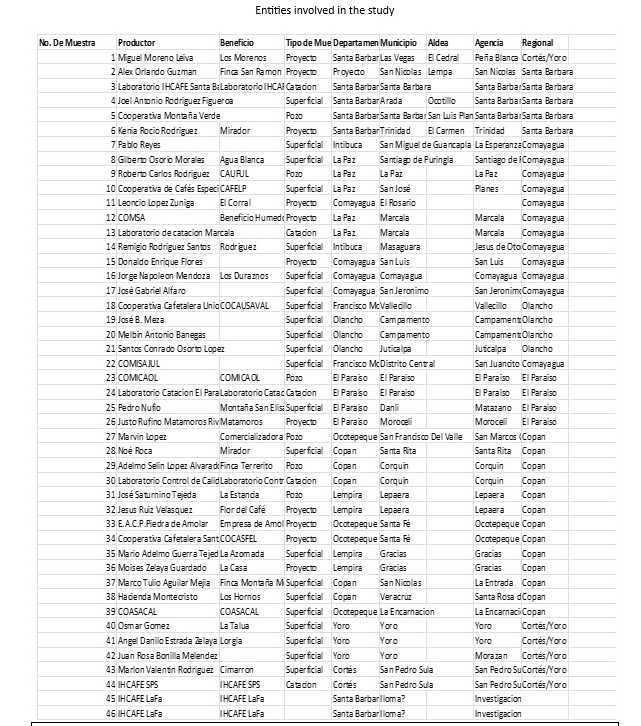
The provenance of the waters that have been analyzed can be summarized in 4 categories :
1. Proyecto: Water that belongs to the network of drinkable water in a community, collected at its source, generally kept in stocked tanks where theoretically it should be treated with chlorine for sanification and from there it is distributed to homes and other community service, principally destined for human consumption.
2. Catacion: water that is used in the Research Centers of IHCAFE, in the sensory analysis laboratory.
3. Superficial: Water that is obtained directly from a river or source of water (lagoon) and brought directly to the coffee processing unit by means of tubes.
4. Pozo: is water that is obtained from a perforation (well) and corresponds to aquifer or deep ground water.
Each sample of water was analyzed for: total hardness (°GH), hardness (ppm), carbonate hardness (°KH), conductivity (µs/cm); the TDS, Alkalinity and chlorides.
Results of the analysis
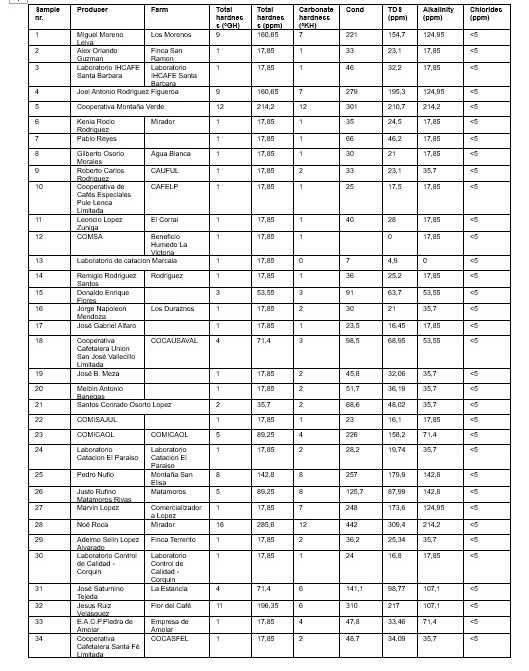
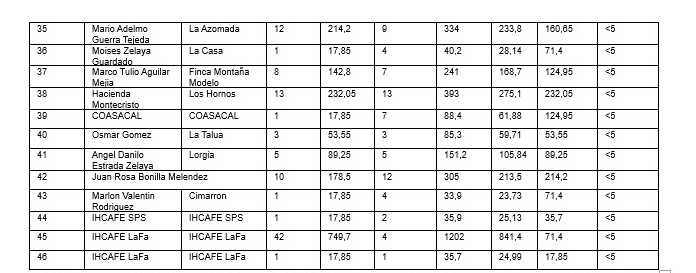
As expected, most water qualities where so good, meaning low in mineral content, that they needed an adequate remineralization in order to make a correct analysis session, only a few needed treatment to reduce hardness. No foreign substances where found, as well as no polluting substances, but most of the time the water was not adequate for a correct extraction.
When analyzing water quality there are two elements that need to be taken into serious consideration:
• The Total Hardness:“the total hardness is the measurement of Calcium and Magnesium cations in the water, minerals with a positive charge. The main components of total hardness are in fact calcium ions (Ca ++) and magnesium ions (Mg ++). The total hardness influences the efficiency of extraction. If the total hardness is low, the water has no “power” to extract coffee.
• The Total Alkalinity:“The alkalinity is the measurement of the concentration of bicarbonate anions in the water. The carbonates have the power to attract and tie to themselves the hydrogen ions (H +) and in consequence lower the acidity of the water. The alkalinity influences the buffering of acids in the coffee, therefore if there is too much alkalinity the acidity of the coffee will not be perceived.”
Therefore which are the correct parameters that we need to look for in the water? Based on the latest research by SCA (Specialty Coffee Association) the results are:
• Total Alkalinity: 40 – 60 mg / L – ppm CaCO3
• Total hardness: 55 – 110 mg / L – ppm CaCO3

Unfortunately, very few of the waters that we found in Honduras respect these parameters and a treatment system is almost always necessary. Most of the waters analyzed are poor in mineral content, well under the “area” described by SCA as the desired value for a perfect extraction, therefore these waters need to be enriched with a specific filter cartridge that through the release of magnesium bicarbonate can bring the values to the desired levels.
Very few of the analyzed waters need to have both hardness and alkalinity reduced by means of a classic decarbonating filter cartridge.
More in general, once by means of the measurement of the above values we know more about our water and we place it in the cartesian map provided by SCA, we can decide which treatment system to apply:
• If we want to lower the total hardness leaving intact the alkalinity we can choose the classic softener,
• If we want to lower the total hardness as well the alkalinity we can choose a filtration cartridge with “weak” ion exchange resins,
• If instead the values found do not permit the use of the two systems indicated above, or if in the water there are substances dangerous for the coffee and the equipment, for example chlorides such as sodium chlorides typical of the areas near the sea or salt-water ponds, we have to eliminate all the dissolved solids by means of a reverse osmosis filtration system, making sure then that the water is re-mineralized through a dedicated cartridge or mixing the desired minerals inside a special container.
In conclusion, if in Honduras during the analysis phase a water with correct mineral content is used, the coffees produces would be optimized with alot of attention and expertise, not only the “washed” coffees that represent the majority of the production, bus also the new “natural” coffees, the “honey processed”, the “anaerobic” and above all the innovation fermentation processes such as double fermentation, that try to find and express very particular aromas and flavors tied to the terroir and modern processing methods, and these coffees would have a greater value.
It would be a real shame, after all the work done during on the farm and during the process, to limit the characteristics of these fantastic coffees during the sensory phase and presentation to the consumption world. The coffee world is based on important sensations that should be controlled and communicated, the “catracho” coffees are entering e new quality phase after years and years of washed and conventional coffees, today the Honduran coffee culture is positioning itself on different markets.
